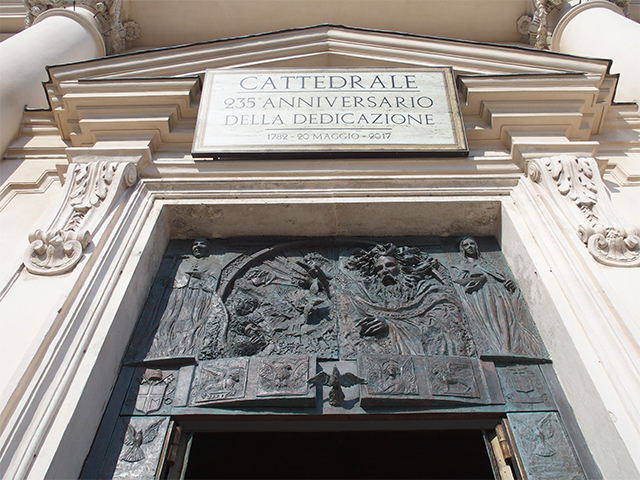Hidden Treasures in the Darsena Romana in the Port of Civitavecchia
The history of the main archeological findings in the Darsena Romana in the Port of Civitavecchia: statue of Neptune, sepulchral epigraphs and much moreIn this article, thanks to the precious contribution of Doctor Roberta Galletta, author of the book "Darsena Romana - The Small Port of Civitavecchia" we tell you in detail the history of the most important archeological find in the Darsena Romana, like the famuous bronze arm of the statue of Neptune, today housed in the Vatican Museums.
The statue of Neptune in the Darsena Romana
The countless remains recovered throughout many years within the Darsena Romana, talk about the imperial splendour first, and the Papal splendour after, through what remains of the vast Roman buildings of the Renaissance and the Baroque ages and in fragments of statues, marble friezes, inscriptions and coins, today conserved at the National Archeological Museum of Civitavecchia.
Anyway, the finding that has intrigued scholars most of all since the beginning is the bronze arm with trident of the colossal statue of Neptune recovered in 1834 in the waters of the Darsena Romana and kept nowadays at the Vatican Museums.
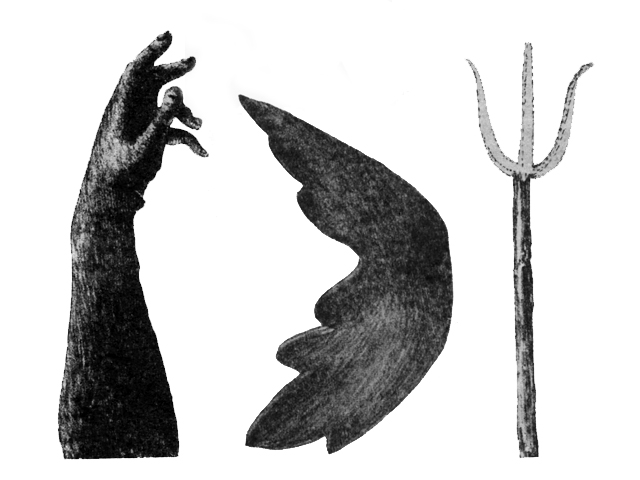
Remains of the bronze arm with the trident of the statue of Neptune
Among the most valid hypothesis, it is believed that the statue comes from a pagan temple located inside the Darsena Romana or, as argued by the historian Salvatore Bastianelli, from the ancient Church of Santa Maria, assumptions that would be confirmed by the custom of building Christian buildings above pagan buildings.
But there is also a third hypothesis based on an interesting pictorial documentation and already published in 1994 in the book "Civitavecchia in Pontifical Medal 1508- 1857" by Adelmo Covati, Adolfo Modesti and Ennio Brunori.
The hypothesis hides behind the frescoes that embellish the Sistine Hall of the Vatican Library, made between 1588 and 1589 by Cesare Nebbia, Paul Brill and Giovanni Guerra to celebrate the public undertakings of Pope Sixtus V.
In one of these frescoes, the statue is in fact represented in the final part of the aqueduct built in 1589 by the Pontiff, just behind the Darsena Romana in the area near the present-day Piazza Calamatta, next to the monumental fountain connected to the aqueduct near the ancient medieval walls of the Rock.
From here it could have finished in the stretch of water of the Darsena Romana due to a series of circumstances unknown to us, to come to light again with the discovery of the bronze arm.
But there is more! The authors cited above argue that the statue in the painting refers not to the God Neptune, as witnessed by the arm and the Trident discovered, but to Trajan and that has been placed at the end of the aqueduct just as a sign of the historical continuity between the Imperial splendors of Rome and the new enterprises of Sixtus V.
Only further studies within the Darsena Romana will reveal who the statue was devoted to, but certainly only its finding would open new important scenarios for local history.
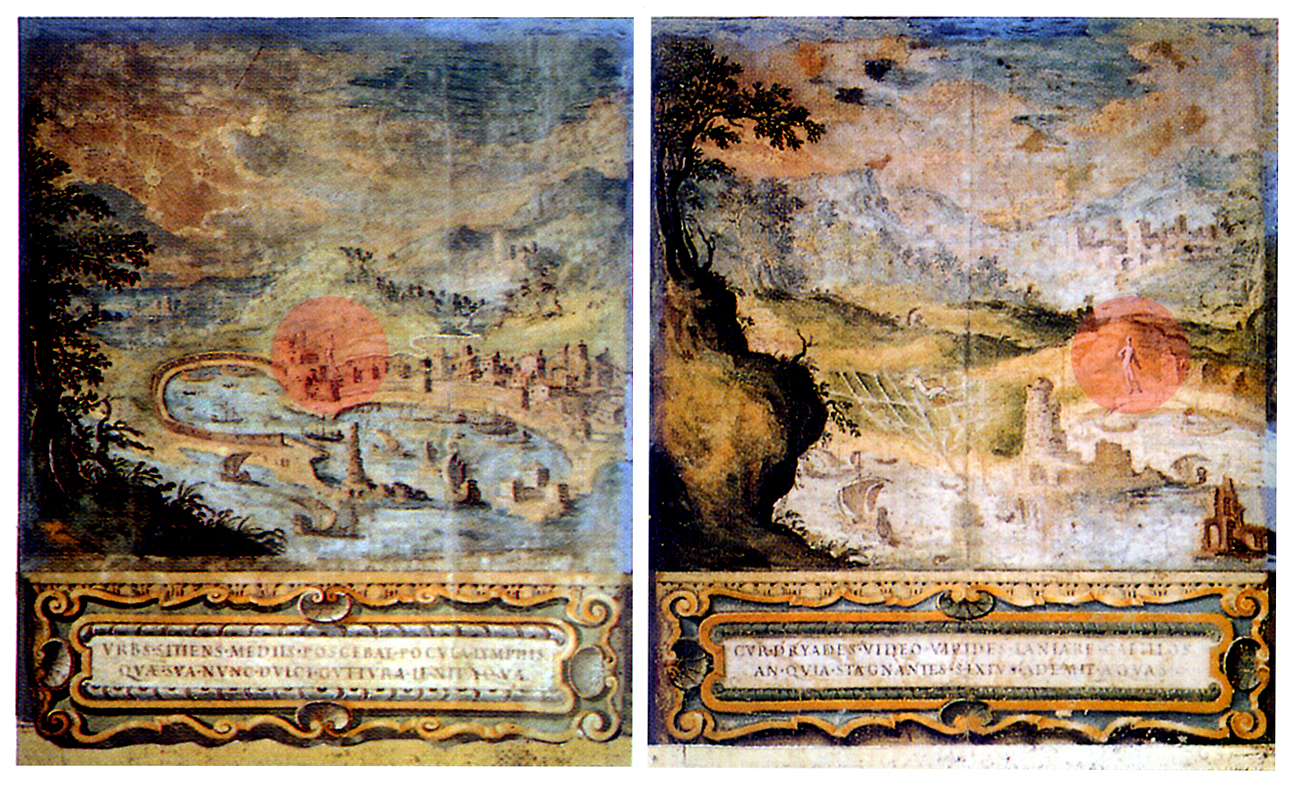
The statue of Neptune in one of the frescoes by Cesare Nebbia, Paul Brill and Giovanni Guerra per Papa Sisto V
The other finds in the area of the Port of Civitavecchia
Other remains coming from the area of the harbor are now kept in the National Archeological Museum of Civitavecchia and are represented by some copies of heads of Greek statues, among which that colossal of a female divinity, those of Hermes and a Diadumeno of Policleto, all dating back to the first century A.D. and which confirm the viability of the harbor and the city of Centumcellae since the early years of construction.
The importance of the port as a naval garrison is then attested by numerous sepulchral inscriptions, recovered in 1864 during the works for the construction of the penitentiary in Via Tarquinia. The epigraphs are referable to the presence of Classiari, the sailors of the Roman fleet between the II and III century, when the port was used as a station for the imperial armies of Rome.
The inscriptions come from a cemetery located in Prato del Turco, outside the perimeter of the Darsena Romana, where is today the seat of the Maritime Police, and are evidence of the presence not only of the sailors, but also of a noble class, which can be deduced by its social distinctions engraved on the epigraphs.
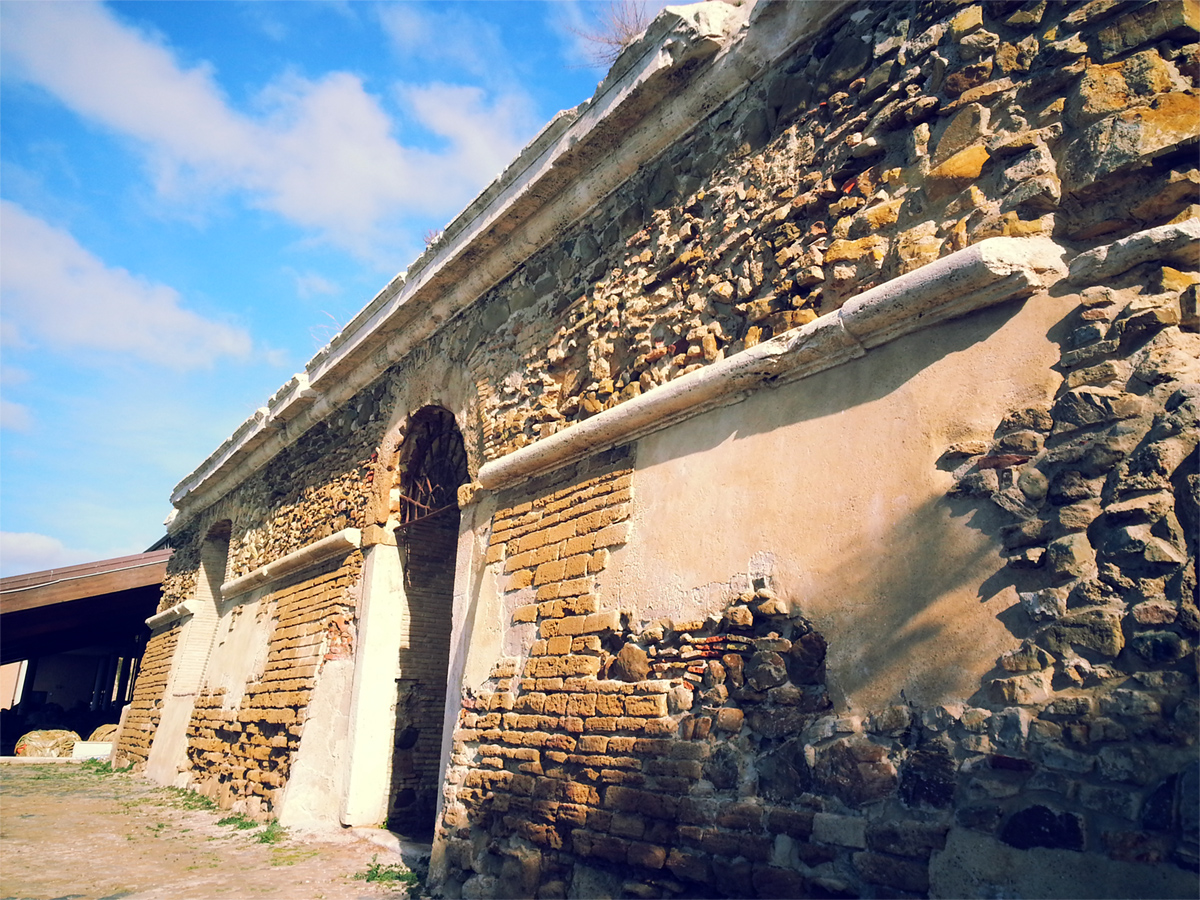
Darsena Romana - Port of Civitavecchia
These inscriptions also provide us with important news on the number of vessels, on the type of boats and on the duration of their stay in the Port. There were the quadriremi Fortuna and Po, the triremi Danae, Nereide and Augusta, the Liburna Diana of the Ravenna fleet, and the quadriremi Dacia, triremi Castore, Aesculapius, Salamina and Partica, biremi Clemenza of the detachment of the fleet of Miseno.
Very likely both fleets were located inside the Darsena Romana, although some scholars consider that in the area of the Fortress Giulia (Fort Michelangelo) could be the command of the fleet and the Maritime Offices.
The presence of a detachment of the fleet of Ravenna and Miseno inside the Darsena Romana is then the tangible proof of military development of the city of Centumcellae, that had assumed its military importance especially thanks to its strategic position in the Tyrrhenian Sea.
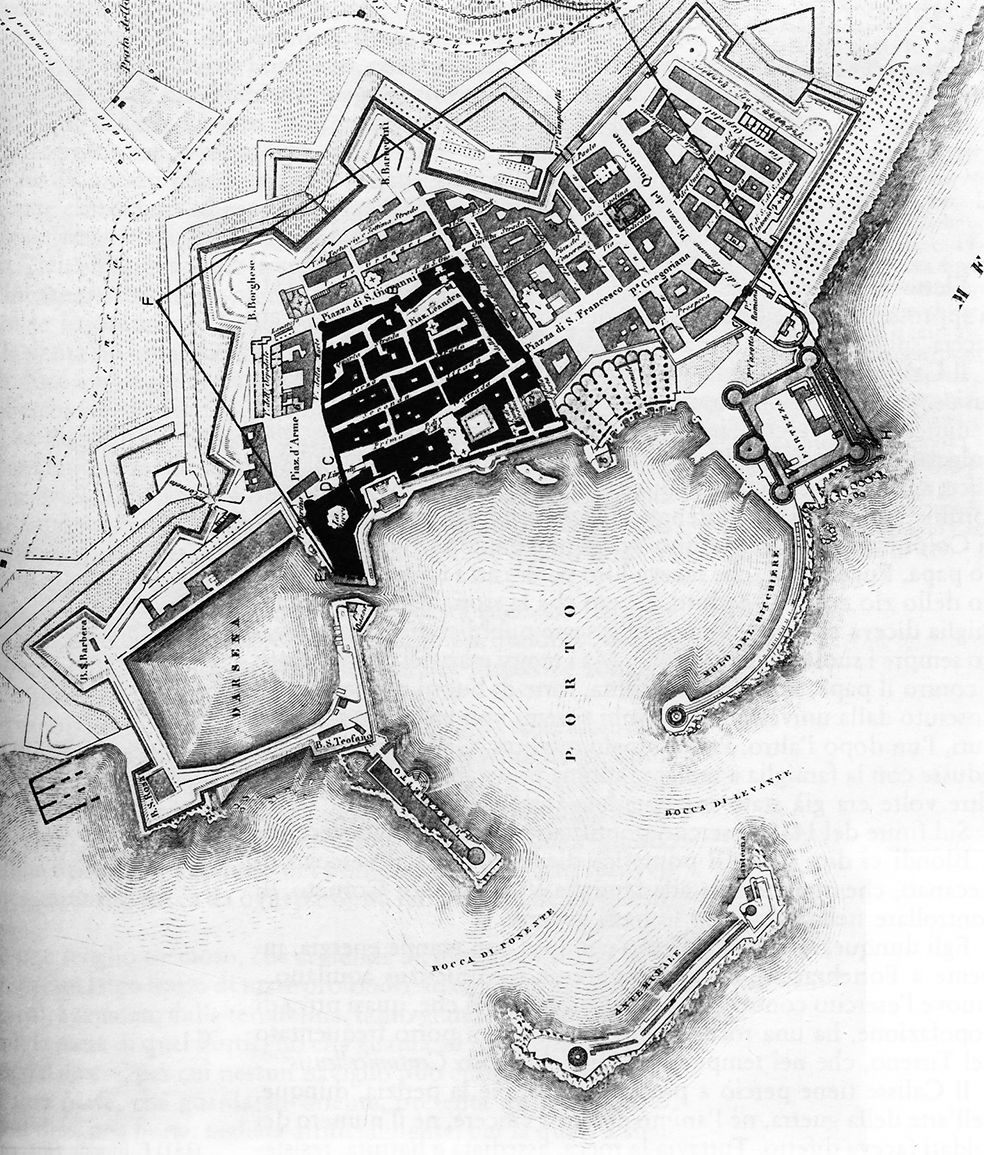
The Port of Civitavecchia in 1850
A Christian Basilica outside the Darsena Romana
The ancient Centumcellae was soon affected by Christianity and proof of this is the fact that Pope Cornelius was forced to exile in this city (251-253) by Emperor Treboniano Gallo. This event highlights the strong roots of early Christians in the city, and especially a certain tolerance by the Empire towards Christianity before the edict of Constantine in 313.
Also the discovery of a basilica, Christian perhaps, of late Roman era described by the historian Pietro Manzi and by Salvatore Bastianelli under pier Vespucci, just outside the perimeter of the Darsena Romana, exactly under the premises of the present Bar Barbagia, could confirm the presence of the bishop's seat outside the walls.
Right in this area, in fact, in the stretch in front of the thermoelectric power plant Enel of Fiumaretta was discovered a Christian cemetery not far from the cemetery of the sailors of the Roman fleet of Classiari in Prato del Turco.
From "The Darsena Romana - The Small Port of Civitavecchia" by Roberta Galletta.



 PORT MOBILITY CIVITAVECCHIA
PORT MOBILITY CIVITAVECCHIA










